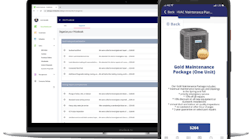We were scheduled to turn in our first big homework assignment of the year. All of the kids were excited by the prospect of impressing the new teacher, except Johnny. As we proudly turned over yellow papers featuring our finest cursive hand, we heard the now-famous line, “Mr. Stanko, the dog ate my homework.”
Shy of selecting a fresh slab of bologna over a clean sheet of ruled paper for a writing tablet, the whole K-9 misadventure sounds a little “fishy.” Somewhere along the way, many sales managers have heard a grown-up variation of this excuse. And, if you haven’t heard a story like this, there’s a good chance you aren’t demanding enough process from your team.
One would never expect salespeople to be change-averse. After all, aren’t they supposed to serve as harbingers of change for their customers? But, we’ve discovered salespeople often stand directly in the way of profit enhancing changes in distributorland. And they have managed to perfect their excuses to the point that they’re believable … almost.
Join me as we detour from the hard road of business improvement and take a short stroll down the primrose path of almost plausible excuses.
The Dog Ate My Customer List – a Customer Relationship Management (CRM) System Story
Raise your hand if you disagree; capturing important customer information is becoming a critical piece of the wholesale industry. It’s important to building modern marketing programs. The information is vital to customer segmentation, which allows better matching of pricing to perceived customer value. Because customer data allows us to better understand customers, we can develop and test new sales approaches. Simply put, we don’t live in a one-size-fits-all world, and customer information gives us objective measures.
As an industry, we hold information generated by CRM systems in high regard, but the road to implementation is littered with half-done systems. Even after spending tons of money, it’s common to discover distributors lacking fundamental customer information. Email addresses of technical primary contacts, proper titles and even the correct names of the very people so important to success are left to chance.
To illustrate how bad this really is, I’ll take you back to a meeting I had a couple of years ago. The customer, being of proud Lithuanian descent, had a last name with six vowels. In a customer satisfaction interview, he lamented that he spent nearly a half million dollars with his local distributor, and they still couldn’t manage to properly spell his name on their invoices. It had become a joke within his organization and he made light of the whole thing, but I suspect it cut into some deep sensitivities that sellers are best to avoid.
Beyond these very simple “name, rank and serial number” issues, we discover more. When inside and outside sales share the same data, sales call effectiveness improves. Seemingly small snippets of information create major impact. A question about a previous product presentation or an extra follow-up on a past quotation can accelerate sales growth, but we hear excuses. Everyone is too busy to find time to capture and record the data.
Progressive companies are upping the ante by evolving away from capturing data to what is being dubbed actionable analytics. Armed with actionable analytics, these distributor managers are capable of tying activity to results. For instance, by measuring new product revenue against the cost of selling activities, the manager can more precisely gauge future launches. And as distributor policies migrate to tiered “pay-for performance” plans, top distributors will employ this information in forging new distributor deals.
So why are salespeople so practiced in avoiding CRM system responsibility? Some are concerned with accountability. The romantic notion of the Lone Ranger Seller cruising the open spaces of their territory in a late model Ford lives on in legend. Strange as it sounds, these guys envision themselves as rugged individualists setting their own pace and making their own plans.
Romantic notions aside, some salespeople withhold data for other reasons. Assuming positive intent, some salespeople have lulled themselves into believing they are the only person in the company capable of comprehending the customer’s best interest. Their deepest fear centers on someone else making an epic blunder and setting back the selling effort.
Other times, the outlook is sinister. More than a few sellers believe information equates to job security. Hoarding information immunizes the salesperson against management initiatives. This set believes they hold the final trump card and they can easily take their best customers to a competitor.
In today’s reality, selling has become a team effort. Failure to share information throughout the team hampers process. Failure to follow predetermined plays limits success within the whole team. But this isn’t the only excuse you are likely to hear.
I’m Already Working 12 Hours a Day. Do You Want Me Selling or Planning? (Planning Process)
Many distributors have discovered that it takes a very long time to establish new customer relationships. Others find that in spite of success with existing products, their organization’s ability to launch related products necessary for long-term business health is hampered.
The simple truth is our industry has slowly adopted a dangerous habit. We practice a reactive sales model. It’s not an immediate threat, but long term, it’s crippling. Here’s how it works. An existing customer calls with a question or support issue on a past purchase. The salesperson reacts to this issue immediately. Along the way, some excellent customer support is provided. The customer compliments the seller and potentially rewards this behavior with another purchase. Everything sound good so far? The unfortunate part of this equation takes a while to manifest itself. Our ability to find new customers or expand the product technologies we sell is compromised.
Planning lies central to this issue. Or more precisely, the lack of planning is slowly cutting and constricting the lifeblood of future success. During the past decade, in spite of technology tools to expedite its impact, planning has fallen on hard times. This can range from simple things like setting appointments to investing the time matching product introductions to customer need.
While conducting research for our book, The Target Driven Sales Process, we discovered that many salespeople still use product-of-the-week selling. With pre-thought, no metrics and no analytics, these folks randomly hand out product literature in a time-consuming, scattergun approach.
Planning improves efficiency. Yet to a certain segment of our sales force, this concept seems counterintuitive. Taking time to reinforce planning is frustrating because most of those in management positions take it for granted. There really is a new reality. It truly is different from back “in our day.” Smartphones, iPads, electronic literature and lots of other gadgets allow a rookie to disguise his planning deficiency to a point. Planning is different from 15 years ago, but the skills are still essential to success.
We believe the first step in planning must involve the process of matching customer needs to our product offerings; most call this targeting. Face-to-face customer time is a precious commodity. Wasting a single second talking about a product for which the customer has no interest is a travesty. Wasting the time of a product specialist or other team member should be a hanging offense.
I Know the Market and This Won’t Work. (Pricing Process)
During in-depth interviews with dozens of distributors who have instituted successful pricing processes, the story always comes back the same. They experience very little if any pushback from customers, but they get plenty of pushback from their team.
The excuses are so predicable, I can almost mouth the words. “This pricing stuff works in big cities/small towns/west coast/east coast/anywhere but here. Our customers will react negatively. They will immediately recognize we are gouging them. And the competition will have a field day.” And when all else fails, the sales guy will look his boss in the eye and say, “I’m paid on gross margin; I’m doing everything in my power to maximize that gross margin. Don’t you trust me?”
David Bauders’ team at Strategic Pricing Associates has developed some powerful tools to analyze price data. In an interview with him several months ago, David produced dozens of analytical graphs showing market price, order size and product discounts. Amazingly, they all looked the same. Customers making very small purchases are getting price levels well below the natural market. Simply stated, distributors are giving away money by the bushel.
David recommends a simple test to determine if a distributor’s team actually understands market pricing. He takes the top 20 SKUs from a company and asks the sales team to provide a best estimate of the market price. Fewer than 25 percent of the sales team gets anywhere near a passing grade. The guys who claim to be maximizing your margin can’t.
There are some root causes to this whole issue with pricing. First, most distributor salespeople really do believe they understand the market. The question becomes: where do they get their information?
Let’s face it. In our world, customers have been trained to mislead us on pricing. When was the last time somebody said, “Wait a minute, Jim, your price is too low”? Purchasing departments see their role as trimming just a few percentage points off of the buy price. Their goal is the best service at the lowest price. Secondly, most customers really are nice folks. Rather than tell us our service is rotten or we lack the follow through required to earn their business, they let us down gently with a well-placed, “It looks like your price didn’t line up this time.”
What’s a mother to do? We believe that using a scientifically driven analytic tool will begin to give you an idea of your company’s pricing in the market. On top of that, pricing process metrics allow the manager to measure, coach and enforce a process that adds significantly to the overall bottom line.
An Excuse for Excuses
If you find yourself privy to some of these classic lines, take heed, you’re not the only one. But at the time, you most assuredly feel pretty much alone. There is strength in numbers. As you ponder innovation and process improvement, I urge you to network with others. They’ve heard the same stories; they’ve seen how the results prove them wrong.
Frank Hurtte provides Strategic Insight for New Times. He speaks and consults on the new reality facing distribution in a post-recession world. Contact Frank at River Heights Consulting via email at [email protected] or via phone at 563/514-1104.





